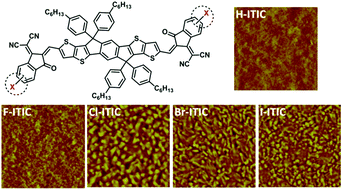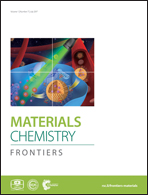Halogenated conjugated molecules for ambipolar field-effect transistors and non-fullerene organic solar cells†
Abstract
A series of halogenated conjugated molecules, containing F, Cl, Br and I, were easily prepared via Knoevenagel condensation and applied in field-effect transistors and organic solar cells. Halogenated conjugated materials were found to possess deep frontier energy levels and high crystallinity compared to their non-halogenated analogues, which is due to the strong electronegativity and heavy atom effect of halogens. As a result, halogenated semiconductors provide high electron mobilities up to 1.3 cm2 V−1 s−1 in transistors and high efficiencies over 9% in non-fullerene solar cells.

- This article is part of the themed collections: Molecular Materials and Devices and Materials Chemistry Frontiers HOT articles for 2017


 Please wait while we load your content...
Please wait while we load your content...